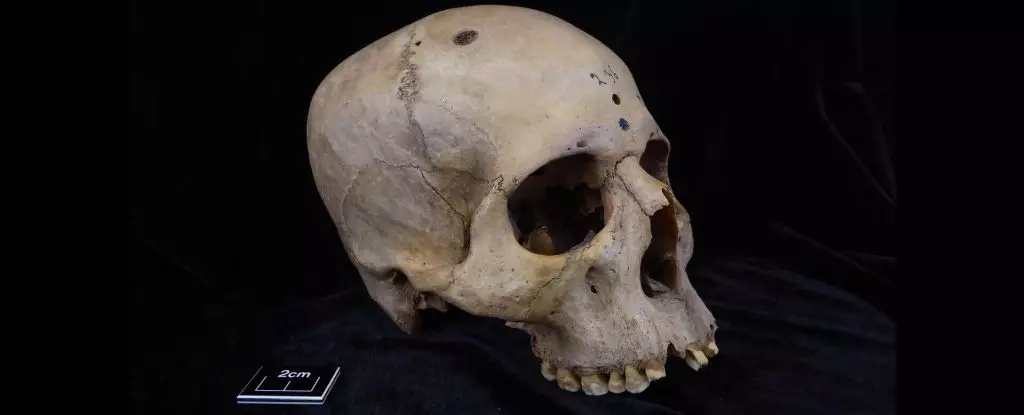The ancient Egyptians were known for their remarkable advancements in the field of medicine, with knowledge and skills that continue to intrigue researchers even thousands of years later. However, there were certain ailments that posed a challenge to their medical expertise. One such ailment is cancer, a disease that remains a significant challenge even in modern times.
Recent evidence uncovered in the University of Cambridge’s Duckworth Collection sheds light on the ancient Egyptians’ attempts to treat cancer. Two skulls found in the collection exhibit signs of cancer and other injuries, along with indications of efforts to address these health issues. According to paleopathologist Edgard Camarós from the University of Santiago de Compostela in Spain, this finding provides unique insight into how ancient Egyptian medicine approached cancer over 4,000 years ago.
One of the skulls, labeled as number 236, belonged to a male individual who lived in ancient Egypt between 2687 and 2345 BCE. The man, who died in his early thirties, had a skull with approximately 30 lesions indicative of metastasized carcinoma. A closer examination revealed that some lesions showed signs of attempted surgical removal, as evidenced by cut marks on the edges of the neoplasms. These marks, which had not healed, suggest that the surgery took place close to the time of the individual’s death and might have been a last resort effort to combat the cancer.
The other skull, identified as E270 in the Duckworth Collection, belonged to a female individual who lived between 663 and 343 BCE and was over 50 years old at the time of death. Her skull exhibited a large lesion near the top, consistent with osteosarcoma or meningioma, as well as healed marks from sharp-force and blunt-force traumas. The healed nature of these injuries indicates that the woman likely received treatment for her wounds, raising questions about her involvement in possible warfare activities.
While the male individual’s skull showed signs of attempted surgical intervention for cancer, the female individual’s cancerous lesion did not display clear evidence of treatment. Despite the ancient Egyptians’ efforts to address the disease, the lack of a definitive cure for cancer during that time is apparent. The advanced stage of cancer in both cases points towards a connection with mortality, highlighting the challenges faced by ancient societies in combating such diseases.
The discovery of these two skulls provides a new perspective on ancient Egyptian society’s interactions with cancer and other health issues. The presence of cancer and attempts to treat it demonstrate that ancient Egyptians were actively engaged in experimental medical procedures, seeking solutions to complex medical conditions like cancer. The wounds and lesions found on the skulls prompt a reevaluation of the roles of women in ancient times, suggesting that they may have played more active roles, including participation in conflicts and warfare activities.
The recent findings from the University of Cambridge’s Duckworth Collection offer valuable insights into the ancient Egyptians’ approach to cancer treatment. While the cure for cancer remained elusive in ancient times, the attempts to address the disease shed light on the medical knowledge and practices of this ancient civilization. These discoveries continue to broaden our understanding of the history of medicine and the challenges faced by ancient societies in combating deadly diseases.


Leave a Reply